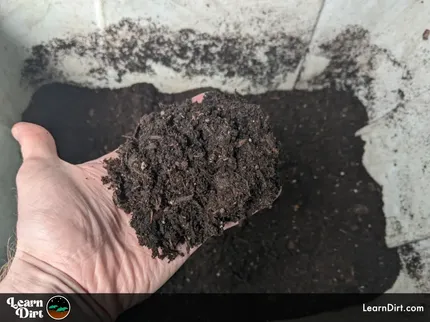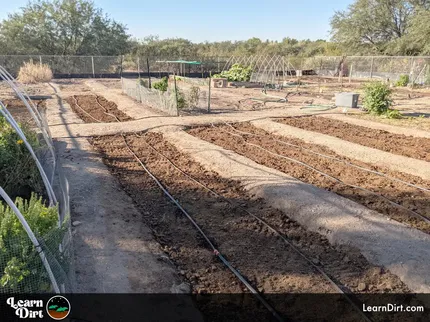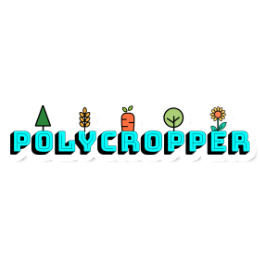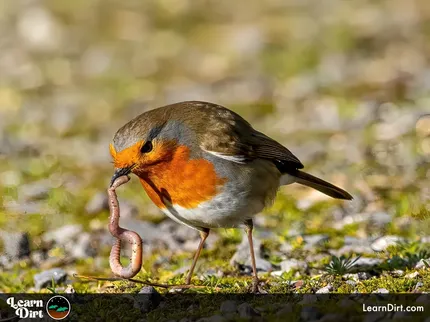Table of Contents
- The Benefits of Composting
- Getting Started With Composting
- Troubleshooting Composting Challenges
- Harvesting and Using Compost
- Final Thoughts...
* Our articles never contain AI-generated slop *
I can't say enough about composting, this is maybe my favorite aspect of gardening & agriculture.
Compost turns the old to new again.
It's a sort of alchemical transmutation from the once-was into the soon-to-be.
Disclaimer: This post may contain affiliate links. Refer to the privacy policy for more information.
Composting turns ends into beginnings, and makes everything possible.
It can't be removed or separated from organic gardening, whether you are the one doing the composting or someone else is. It's the precursor to growing great plants.
composting is gardening. Plants grow in my compost bins unaided, unplanted, untended.
If you know how to make incredible compost, plants will practically grow themselves.
This is the soil-building mindset.

The sooner you get your compost system up and running, the sooner your garden can thrive!
It feeds soils, recycles nutrients, fertilizes plants, improves soil quality, moisture retention, structure.
Join The Grower's Community
Whether you cultivate vegetables, house plants, succulents,
mushrooms, flowers, cannabis, or more...
you're welcome here 🌱
Check It Out!
It provides habitat for a thriving microbiome, which helps your plants grow in return for food and housing.
The entire ecosystem thrives when soil thrives. And you get more food with higher nutritional content than from depleted soils.
Mastering composting is mastering gardening, all else is secondary to this skill and understanding.
Let's jump into the why, the how, and a bunch of practical tips for you on how to make incredible compost for your garden or farm.
The Benefits of Composting
The benefits of composting are seemingly endless.
It's such an indispensable practice for gardeners who are looking to cultivate regenerative ecosystems, no matter the size of your garden.
Here are some key advantages:
Soil Enrichment
Composting is one of the most fundamental ways to enrich the soil.
Without organic matter, soil returns to sand or clay unsuitable for supporting plants or much of any life at all. Organic matter is the key to great dirt.
Composting is the process of returning spent organic matter back to the soil, so you can see how important this is for enriching the soil.
Enriched soil, in turn, promotes vigorous and abundant growth of healthy plants.
By improving soil structure, enhancing water retention and infiltration, and promoting nutrient availability, compost is the key to creating a healthy environment for your plants to grow in.
Waste Reduction
Along with being one of the keys to great organic gardens, composting also allows us to divert some of our organic waste from landfills.
Rather than locking nutrients up where it can't be utilized, composting yields a more sustainable approach to waste management.
Instead of volatilizing and off-gassing carbon dioxide in landfills, and contributing to the greenhouse effect, this carbon can be utilized by plants to grow nutrient-rich food.
Right now, I've got hummingbirds visiting my compost, comprised of shredded cardboard boxes, food scraps, coffee grounds, and tea leaves.
The compost feeds thriving colonies of bacteria, fungi, plus all manner of insects - before eventually being ready for my plants to utilize.
The hummingbirds are attracted by the gnats, which they readily gobble up - transferring the nutrients from my waste stream up the food chain to the birds in the ecosystem.
Likewise, lizards are attracted by the black soldier flies, whose larvae eat the food scraps in my compost and turn it into nutrient-rich black gold. Some of the nutrients is magnified up the chain to the lizards in this way.
Even without a garden, your local ecosystem can benefit from you diverting your food scraps and organic waste into a compost pile.
Dig Cool Merch?
By championing compost you can be an ecological alchemist and cycle nutrients diverted from your trash into feeding your local flora and fauna.
Soil Microbiome Support
Much like your gut microbiome, the soil microbiome is critical for plants in organic systems in order to digest nutrients.
Plants rely on a healthy, thriving microbiome in the soil, because soil acts as the stomach of the plant.
Compost creates the thriving microbiome which plants need, and is therefore the perfect amendment to soil.
Compost can also be utilized for brewing compost tea, likewise because of it's thriving microbial activity. There's no better way to get beneficial microbes into your garden than through compost!
Beneficial microbes, sometimes called "bennies" for short, are critical for releasing nutrients in soils for plant utilization. A healthy microbiome also aids in suppressing diseases in the garden.
You can thank bennies for increased yields, better moisture retention, higher nutrition content, increased disease resistance, increased hot / cold tolerance, etc. in your plants.
Healthy soil and a healthy microbiome expand resilience across numerous facets, and compost is a great way to get there!
Carbon Sequestration
Did you know that composting helps sequester carbon and store it in the soil?
Yesterday's food scraps, plant trimmings, cardboard and paper shreddies can become tomorrow's soil instead of tomorrow's greenhouse gasses.
By choosing to cycle this carbon back into soil and plants, you can keep it in circulation, sequestered in the soil microbiome and in your plants instead of off-gassing into the atmosphere.
This plays a role in both mitigating climate change, and in promoting long-term sustainability.
The more solid-form carbon we can keep circulating, the less carbon volatilizes and escapes into to the atmosphere. Compost and soil are incredible carbon sinks, and plants act as carbon pumps to pull it out of the atmosphere and store it. This helps balance the carbon cycle on Earth, and if we do it enough we can slow or even reverse global warming.
Getting Started With Composting
Now that you're well-versed in the importance of compost, let's wade into the practical aspects of actually making the stuff!
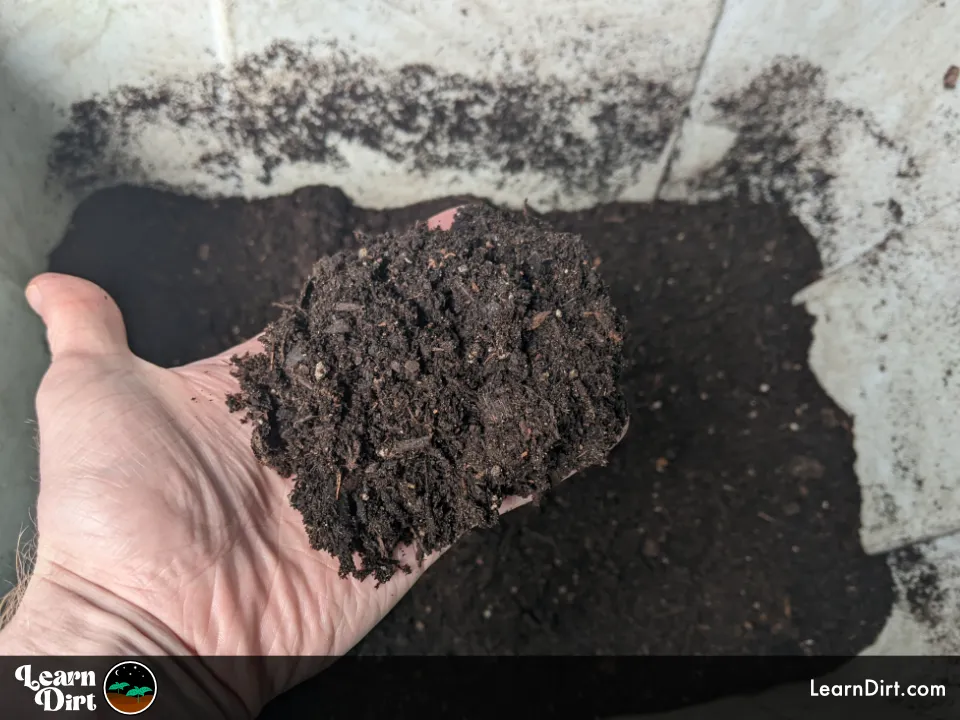
Picking a Composting Method
There are lots of different ways to compost, and the method you choose depends a lot on your space and amount of material and resources available to you.
Composting methods also hinge upon climate and moisture levels, and the amount of labor you can spend tending to them.
Common methods include traditional compost bins, tumblers, vermicomposting (worm bins), BSFL (black soldier fly larvae bins), heap composting, or in-ground, or in-bed composting.
Always remember: the simplest and oldest method of composting is to simply bury one's food scraps and organic waste underground.
Nature wants to return the nutrients back into soil and, by extension, plants.
Composting does not need to be complicated. Work with what you've got available!
What Are Browns And Greens?
Composting relies on a balanced mix of organic materials.
These are typically subdivided into "browns" (carbon-rich) matter, and "greens" (nitrogen-rich) matter.
The lines between these two can get a little blurry, as many scraps contain both carbon and nitrogen in various ratios.
As a general guide, though, consider the following classifications
"Brown" materials encompass:
- dry leaves
- straw / hay
- wood chips
- chopped stems & stalks
"Green" materials include:
- kitchen scraps
- plant trimmings
- grass clipping
- coffee grounds
Compost Ratio
Browns and greens are combined to create compost, and the ratio matters.
Compost ratios are typically describing volume, though occasionally gardeners describe weight with their ratio. It's important to know which someone is referring to, as a 30:1 ratio by volume can be vastly different than a 30:1 by weight.
Browns are typically listed first, and are always the larger number. "30:1 by volume" means you use something volumetric like a scoop, cup, or bucket to and put in 30 scoops of carbonaceous "browns" and 1 scoop of nitrogenous "greens"
Common Compost Ratios
Now that we know how ratios are defined, let's look at some of the most commonly-used ratios by gardeners:
Most-Common: 2:1 or 3:1
Higher Browns: 4:1 or 5:1
Higher Greens: 1:1 or 1.5:1
*All ratios listed are Brown:Green by volume*
Ratios with higher-than-average browns will slow decomposition, which can be desirable in hot climates and hot seasons, when smells become an issue, or when too many bugs are present. Adding carbon is a great way to reign in compost bioactivity levels if they get too high.
Ratios with lower-than-average browns will speed up decomposition, useful in cold climates and cold seasons, or when results are too slow, or the pile becomes too dry.
Layering & Moisture Management
Alternating layers of green and brown materials will help to optimize the decomposition process.
Don't forget to keep your compost pile moist, about the level of a damp sponge. A 5 out of 10 on a moisture meter is a good level to aim for.
Regularly monitor moisture levels and add water if necessary to maintain the right balance.
If your pile becomes too bioactive and attracts more bugs than you'd like, simply allow the pile to dry back and reduce or stop watering temporarily until it has had time to chill out.
Turning & Aerating
Regularly turning the compost pile helps aerate it, allowing beneficial microorganisms to thrive.
Use a pitchfork or compost crank to mix the materials and promote decomposition. I really dig the compost crank from Lotech, which is made right here in Tucson. These things work really well for smaller piles and bins, especially if your compost is somewhat chopped up.
The turning process also prevents obnoxious odors and accelerates the composting process.
Monitoring Compost Temperature
Keeping a close eye on the temperature of your compost is important, especially if you want to hot-compost for breaking down meat, dairy, and more.
It's also critical for very large piles that the internal temperature does not get so high that it combusts - you don't want that!
If temperatures drop too low, microbial activity has stalled and decomposition slows so much that you'll be waiting forever for your compost to finish.
Grab your compost thermometer and test the center of your pile weekly, adjusting when necessary to maintain an ideal temperature range.
Troubleshooting Composting Challenges
Composting is a dynamic process that may encounter occasional challenges.
Here are some common issues and their solutions:
Tough Smells
Bad smells indicate improper composting conditions.
Ensure proper aeration, maintain the right moisture levels, and avoid adding meat, dairy, or oily / salty food scraps if you're cold-composting, which can lead to some rough smells. Only add these tougher-to-compost scraps if you've got a hot pile that hits the right thermal range.
Bugs & Critters
It's important to be nuanced in our discussion of bugs and critters in compost piles.
There's a tendency for non-gardeners to poo-poo compost as only a source of unwanted pests. Landlords and HOA's, I'm looking at YOU!
There is some truth to this - compost by definition is organic matter that's being broken down by all manner of creatures. From bacteria and fungi, to flies, larvae, arthropods, isopods, etc.
It's important that we also mention here that compost can be almost completely enclosed (as with tumblers) in order to prevent too many pests and critters from gaining access.
You can also cover them with straw, wood chips, or more brown material so the active greens are deep in the core of the pile rather than exposed. Keep fresh greens off the top or outside of your pile to reduce critters.
Compost can be diluted with more "brown" carbonaceous material to slow the decomposition, reducing pests and critters.
Additionally, through mindful watering you can reduce or increase your compost bioactivity, reducing or increasing pest / critter populations in turn. If your compost has too many bugs, you can just water it less.
Finally, you can reduce the amount of cooked or smelly scraps you add to your compost (fish, for instance) if you find they are attracting pests.
I've found composting to be extremely viable even in small places and on apartment patios, as long as you tend to them and control the bioactivity level to keep it reasonable.
Other folks even run worm bins in their houses, so don't let a fear of pests and critters prevent you from making your own incredible compost.
As with most aspects of life: ignore all naysayers if they can't discuss compost in a nuanced manner, and want only to demonize what they don't understand.
Slow or Stalled Decomposition
If your compost is decomposing too slowly for your preference, there are couple variables you can control which will increase the rate of decomp.:
-Water it more
-Turn / aerate it more
-Insulate it more or make the pile bigger to warm it up
-Add more nitrogenous "greens" to the mix
-Put it in a sunnier / warmer location, or in a greenhouse or heated tunnel
Remember that larger piles can maintain more biological activity, and insulate themselves better from the cold.
Large piles tend to decompose faster than small piles.
Turned piles decompose faster than unturned piles.
Harvesting and Using Compost
Once your compost has matured into black gold, it's ready for use in your garden or on your farm.
Here's how to harvest and utilize it:
Harvesting Compost
Make sure that you stop adding new material to your compost at least a few weeks or a month or two before you want to harvest it. This ensures that everything will be properly broken-down.
If your compost smells great and looks great, it's time to screen it to remove any large chunks.
I love using a piece or two of 1/4" hardware cloth as a screen, which can be mounted in a wooden frame for convenience. You can also fold a piece of hardware cloth back over itself to create a finer mesh (just make sure they're slight unaligned with each other).
Place your screen over a tote, tub, or wheelbarrow and sift your compost through, removing the large chunks. You can return the big pieces back to your compost pile to break down further.
If your compost is for garden use, you won't need to sift it as finely as if it's for seed-starting mix, potting mix, or compost tea. Consider your use case and choose a screen size that works for you.
Finished sifted compost can be stored in totes, buckets, or barrels with just a couple holes for ventilation.
Remember to allow moisture levels to drop down to what you'd find in a store-bought bag of compost or soil - slightly moist but certainly not wet.
Applying Compost to the Garden
If you're starting a new plot, you can till your compost in with native soil to create a homogenized mix of good dirt.
For established plots or beds, you can simply add compost on top (top-dress) and (optionally) work it into the top couple inches of soil.
Be mindful that small seedlings will not be able to handle as much compost as mature plants, and may easily be buried if you're not careful.
Once your plants are established, it's easier to add more compost at once, and risk of nutrient burn is reduced.
Compost will enrich the soil and improve its structure, which translate into happier, healthier plants.
Brewing Compost Into Tea
Compost tea is worth its weight in gold.
It's a potent liquid fertilizer and valuable probiotic which can easily be brewed fresh from your compost.
Compost tea can be sprayed on plants as a foliar feed, or used as a soil drench to boost plant health and increase yields.
Check out this guide if you're interested in brewing your own compost tea: How To Make Compost Tea
Making Seed-Starting Mix With Compost
Check our this article if you'd like to learn about utilizing compost in your own homemade seed-starting mix.
Making Potting Soil With Compost
Similar to the seed-starting mix above, but with more drainage and less moisture retention for potting mix.
Reduce coco peat / peat moss, and increase sand or perlite to help with drainage for your homemade potting mix.
Compost amount can be adjusted based on the nutrient needs of the plants you'd like to grow in pots.
Final Thoughts...
Great soil really is the start of the food chain, so if your goal is to grow healthy plants it only makes sense to start by growing healthy soil.
Compost is the gateway to soil-building, and gives you a nutrient-rich foundation upon which you can grow any plants you choose.
Through regenerative gardening principles and focusing on building healthy soil, we can create an abundant and sustainable garden ecosystems where plants, animals, and people all thrive.
Thanks for reading, and happy composting!
That's all for now, thanks for reading!
If you have any questions, comments, or would like to connect with fellow gardeners, head on over to the forum and post there.



![Don't Till Away Your Carbon [Taffy]](/media/product_images/dont-till-away-your-carbon-[taffy]_sticker_260x260.png)
